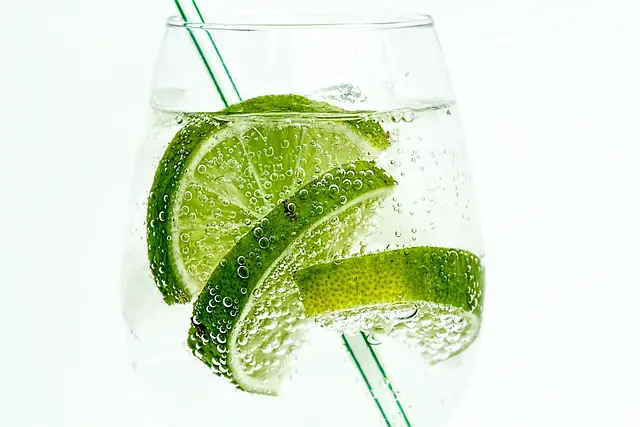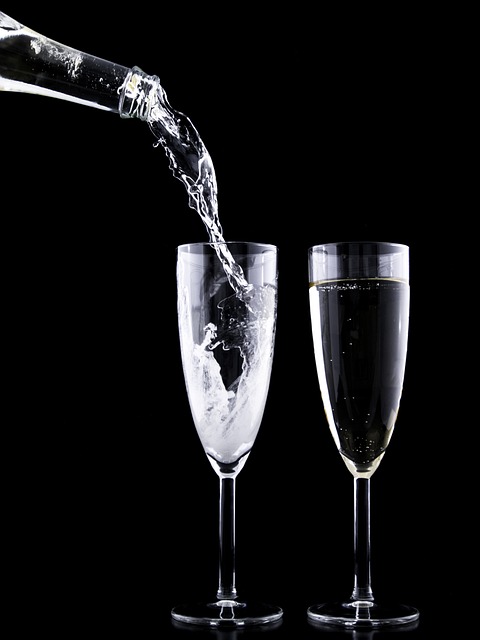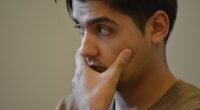Cut glass is made from a mixture of soda or potash, lime, and silica while crystal is made by adding lead to the mix. The difference between cut glass and crystal lies in their composition and manufacturing process.
Cut Glass
(Photo by Margarita Zueva on Unsplash )

Cut glass, as the name suggests, is created by cutting and polishing the surface of glass to create intricate patterns and designs. This process involves using a wheel or lathe with diamond or stone wheels to carve into the surface of the glass. The resulting texture and shine give cut glass its signature look that catches light in stunning ways.
One of the main benefits of cut glass is its durability compared to crystal. Since it’s made from thicker material, it’s less likely to chip or crack over time. It also tends to be more affordable than crystal, making it a great option for those looking for elegance on a budget.
Cut glass can come in many different forms, from drinking glasses and vases to decorative bowls and even furniture accents! Its versatility means there are endless options for incorporating this beautiful material into your home decor.
Caring for cut glass requires a gentle touch – avoid exposing it to extreme temperatures or abrasive materials when cleaning. Handwashing with mild soap and water is typically recommended over putting it in the dishwasher.
If you’re looking for something elegant yet practical that won’t break the bank, cut glass may be just what you need!
Crystal
(Image by JamesDeMers from Pixabay )

Crystal is a term that’s often associated with high quality glassware. But what exactly sets it apart from other types of glass? Well, for one thing, crystal contains lead oxide which gives it its distinct clarity and reflective properties. This also makes it heavier than regular glass.
Another defining characteristic of crystal is its ringing sound when tapped lightly. This is due to the fact that crystal has a more uniform structure than other types of glass, allowing sound waves to travel more easily through the material.
In addition to its aesthetic appeal, crystal also has practical benefits such as being less porous than regular glass which means it doesn’t absorb flavors or odors from drinks like wine or whiskey.
However, because of its lead content and delicate nature, caring for crystal can be quite different from caring for regular glassware. It should always be hand washed using mild soap and water and never exposed to extreme temperatures or sudden changes in temperature.
While it may require a little extra care and attention compared to other types of glassware, the beauty and elegance that comes with owning a set of high-quality crystal glasses make them well worth the investment.
Cut glass Vs. Crystal – Key differences
Cut glass and crystal are often used interchangeably, but there are distinct differences between the two. The primary difference lies in their composition. Cut glass is made of lead-free glass, while crystal contains a minimum of 24% lead oxide.
The presence of lead in crystal gives it greater clarity and weight compared to cut glass. Crystal also has a higher refractive index than cut glass, meaning that it can bend light more effectively, giving it a sparkling appearance.
Another key difference is the way they are produced. Cut glass is machine-made or hand-cut using diamond-tipped wheels to create intricate designs on its surface. In contrast, crystal undergoes an additional step called “crystal blowing” after being molded into shape to remove any air bubbles trapped inside.
Additionally, due to its high lead content, crystal has better acoustic properties than cut glass and produces a distinctive ringing tone when tapped gently with a finger.
The main differences between cut glass and crystal lie in their composition, production process, weight and clarity as well as acoustic properties. Whether you prefer one over the other largely depends on personal taste and intended use for decorative or functional purposes alike.
The benefits of Cut Glass
Cut glass is a beautiful and timeless addition to any home or table setting. It offers numerous benefits, from its affordability compared to crystal to its durability and ease of care.
One of the main benefits of cut glass is its price point. Compared to crystal, it is more affordable while still offering a similar level of elegance and sophistication. This makes it accessible for those who want the look without breaking the bank.
Another benefit of cut glass is that it can be much more durable than crystal. The cutting process used in creating cut glass actually strengthens the material, making it less likely to chip or break during use or transport.
Additionally, unlike some delicate crystal pieces which require special handling and cleaning techniques, cut glass can be easily cleaned with soap and water or even put in the dishwasher (depending on the specific piece). This makes it an ideal option for everyday use as well as special occasions.
One cannot overlook the beauty of cut glass itself – from intricate designs etched into each piece by skilled artisans to stunning reflections created by light passing through its many facets. Cut glass adds a touch of class and elegance wherever it’s found.
The benefits of Crystal
Crystal has been treasured for centuries due to its exceptional beauty and unique qualities. The benefits of crystal go beyond aesthetics, as it is believed to have healing properties that can positively impact our physical, emotional, and spiritual well-being.
Firstly, crystal is believed to enhance energy flow in the body, which can lead to improved health and vitality. It is often used in alternative therapies such as Reiki and acupuncture because of its ability to amplify energy vibrations.
In addition to its potential healing properties, crystal also has a calming effect on the mind. Many people find comfort in holding or wearing a piece of crystal during meditation or times of stress as it can help to clear negative thoughts and promote relaxation.
Furthermore, crystal is known for its ability to enhance focus and clarity of thought. It’s no wonder why many successful businesspeople keep crystals on their desks! This gemstone enhances mental clarity allowing one’s creativity and productivity levels increase significantly.
Lastly but not leastly ,many people find joy in collecting crystals due to their unique characteristics- from color variations to size and shape differences there are so many types available that everyone will surely find something they love.
The benefits of Crystal extend far beyond just being visually appealing; this precious stone carries positive energies that support our minds,body,and souls helping us feel at peace with ourselves while achieving great things along life’s journey.
How to care for cut glass and crystal
Cut glass and crystal are delicate materials that require proper care to maintain their beauty and clarity. Here are some essential tips for taking care of them:
Firstly, always handle cut glass and crystal carefully. You should avoid putting pressure on any part of the item when you pick it up or move it around.
Cleaning is also crucial in maintaining your cut glass and crystal’s shine. Hand washing with mild soap, warm water, and a soft cloth is recommended over using a dishwasher or harsh detergents.
While cleaning, never use abrasive sponges or brushes as they can scratch the surface of the material.
To dry off after washing, gently dab the items with a soft lint-free cloth rather than rubbing them dry to prevent scratching.
When storing cut glass and crystal, make sure not to stack them too high as they may get scratched or chipped. Keep each piece separate with tissue paper if possible.
In summary, handling delicate objects like cut glass and crystal requires special attention. By following these simple steps for cleaning & storage will keep your pieces looking beautiful for years to come!
How can you tell cut glass from crystal?
One way to differentiate cut glass from crystal is by examining the clarity of each material. Crystal has a higher level of transparency and reflects light in a more brilliant manner than cut glass, which tends to have a slightly cloudy appearance.
Another factor to consider is weight. Generally speaking, crystal will be heavier than cut glass due to its lead content. If you are able to handle both materials, take note of their weights as this can also help you distinguish between the two.
When it comes to sound, crystal produces a clear ringing noise when tapped with your finger or an object like a spoon. Cut glass may produce some sound but it won’t be as resonant as that produced by real crystal.
Look for any markings on the piece itself. Many manufacturers label their products as either “crystal” or “cut glass,” so if there’s no label available but you see one on another similar product from the same manufacturer then chances are high that yours could be made up of either material too.
Does cut glass ring like crystal?
One common way to distinguish cut glass from crystal is by the sound they make when tapped. Crystal has a distinctive clear and musical ring, while cut glass produces a duller thud or clunk.
The difference in sound can be attributed to the materials used in their production. Crystal contains lead oxide, which gives it its characteristic refractive qualities and also makes it denser than regular glass. The added weight of the lead content contributes to the clear ringing tone that crystal produces.
On the other hand, cut glass does not contain any lead and is made with basic ingredients like sand and soda ash. While still beautiful and intricate in design, cut glass lacks the same density as crystal, resulting in a less resonant sound.
It’s worth noting that some high-quality non-lead glasses have been developed over recent years that can mimic crystal’s clarity and ring-like tone without using any hazardous substances like lead oxide.
Whether you prefer cut glass or crystal comes down to personal taste – but knowing how to tell them apart based on their acoustic properties adds an extra level of appreciation for these stunning works of art.
Featured Image By – Dariusz Sankowski from Pixabay








